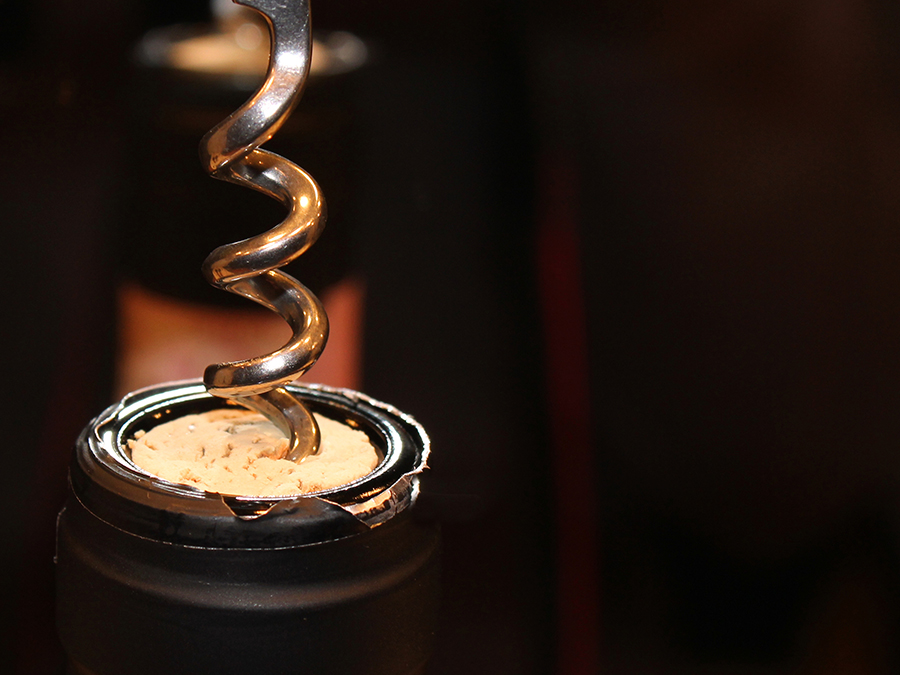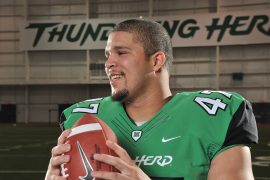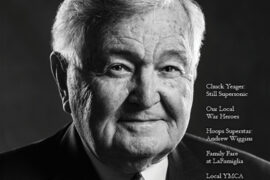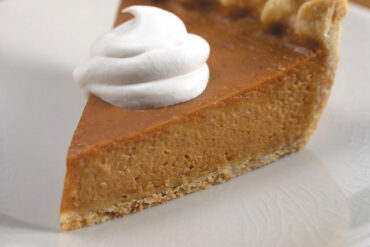HQ’s wine connoisseur presents his list for the top 25 wines of the past 25 years.
By Matthew DeBord
HQ 87 | AUTUMN 2014
The past 25 years have been nothing short of extraordinary for wine. Since the founding of Huntington Quarterly, the quality of wine has literally done nothing but improve. And the quantity of quality wine has also increased dramatically. Wine lovers now have access to wines of regions that before the mid-1980s either didn’t really produce wine or didn’t export it to the U.S.
In fact, so many great wines have become popular and available in the past 25 years that it’s difficult to narrow them down to a Top 25 list. But I’ve given it a shot. I’ve left out vintages because by and large these wines have been noteworthy regardless of when they were made. So, here we go.
Chateau Cos d’Estournel
This French wine estate was classified as a “Second Growth” back in 1855 – a notch below the most prestigious and famous “First Growths” of the Bordeaux region. It used to be that regular old wine consumers could periodically afford to buy a First Growth bottle; but over the past 25 years, these wines have become increasingly unaffordable. Enter the so-called “Super Seconds,” of which Cos d’Estournel is one of the prime examples. This is a wine that offers First Growth quality at a lower price and is always worth seeking out in “off” vintages when it can be picked up for less than $100.
Cloudy Bay
Sauvignon Blanc
Prior to 1973, there was no wine industry in New Zealand. And then, Presto! A country that had been known for a small population and its herds of sheep was the next big thing in wine. Cloudy Bay was the first of a signature style of Sauvignon Blanc that arrived in the U.S. in the late 1980s and 1990s. It took the wine world by storm with its exotic, fruity and zingy character.
Charles Shaw
Sauvignon Blanc
(a.k.a. “Two Buck Chuck”)
In the early 2000s, there was a “grape glut” in California. Too many wine grapes were produced, creating a minor economic crisis in the industry. A man named Fred Franzia and his company, Bronco Wines, saw an opportunity. They bought up the surplus and packaged it as a line of inexpensive varietal wines sold at the Trader Joe’s grocery stores in California. The price was $2. Folks started calling the wines “Two Buck Chuck,” which stuck. The Sauvignon Blanc was of surprisingly high quality.
Benton Lane
“Red Label” Pinot Noir
For years, lovers of Burgundian Pinot Noir complained that the California version was far too fruity, lacking in the wine’s long-celebrated traditional charms. But then winemakers began experimenting with the grape variety in Oregon, with stunning results. These Pinots were much more Burgundian in style, lighter and more ethereal but with concentrated fruit flavors. Benton Lane’s “Red Label” was among the first of these Oregon Pinots that began to be seen in the rest of the country.
Hartley Ostini Hitching
Post Pinot Noir
The Hitching Post is a steakhouse and restaurant in the Santa Barbara wine country of California’s Central Coast. It was made famous by the movie Sideways, but wine aficionados knew it long before that due to the pioneering wines created by Hartley and Ostini, a pair of enlightened amateurs who refused to believe that California couldn’t do Pinot. Their efforts split the difference between the usual abundant fruit flavors that California wines are known for and the more refined characteristics of red Burgundy.
Joel Gott 815
Cabernet Sauvignon
It’s easy to find a Cabernet Sauvignon for less than $20, but it’s hard to find a truly good Cabernet Sauvignon at that price. Winemaker Joel Gott decided that wine enthusiasts were entitled to better and, under his own label, created wines that deliver near-$50 quality but at a low cost.
Screaming Eagle
Cabernet Sauvignon
Once California’s winemakers figured out that they could make good wines in the 1970s, they concluded they could make monumentally outstanding wines. A small band of winemakers took to the hills around the Napa Valley and got to work. The Cabernets they created were produced in tiny quantities for an exclusive buyership. The media labeled them “Cult Wines.” Screaming Eagle is among the most coveted, a full-bore Cab that lives up to its name – and its $1,000 price tag, if you’re even on the list to be able to buy it!
Taylor’s LBV
(Late Bottled Vintage) Port
The problem with vintage Port is that it’s a wine that has to age before it can be drunk. Like, for 20 years. The people who run Taylor’s, one of the most prominent Port houses in Portugal, believed that was too long to wait, so they devised the LBV style to make a vintage-like Port available to consumers looking for more immediate gratification.
Laurent-Perrier Brut Rose
Laurent-Perrier is the biggest family-owned Champagne house in France. It produces a full range of bubblies, but it’s especially proud of this romantic pinkish offering, which has become a Valentine’s Day staple for couples who want to celebrate in style.
L Mawby Blanc de Blancs
Outside California, Washington and Oregon, the U.S. wine region has struggled to define itself. Larry Mawby, however, has come up with a unique way to make his winery, located in Michigan, stand out. The only way to make a decent wine in Michigan is to make a mediocre still wine and then turn it into a superlative sparkling wine. Pound for pound, this Blanc de Blancs can stand up to some of Champagne’s best.
Georges Duboeuf Beaujolais Nouveau
Beaujolais Nouveau is a simple wine made every year in France, right after the grape harvest in the fall. The wines are rushed to Paris bistros for a few weeks of celebration before winter and the wait for the release of more substantial wines in the spring and following fall. An American importer saw this and figured that he could ship the Nouveau to the U.S., emulating the fun. He partnered with wine merchant Georges Duboeuf, put festive and colorful labels on the bottles and flew them to New York – and history was made. “Le Beaujolais Nouveau est arrivé” is now heard as commonly around Thanksgiving in America as it is in France.
Yellow Tail Chardonnay
Think Beaujolais Nouveau was a fluke? The same importer, about a decade later, realized that a vast amount of wine was being produced in Australia – and being inadequately marketed in the U.S. So a line of “Yellow Tail” wines, each with a colorful label featuring a kangaroo, was born. It was the first of the “Critter Wines,” bottlings aimed at the mass market, all with animals on the labels.
Greg Norman Estates Chardonnay
As the famous pro golfer’s career wound down in the 1990s, he began to develop other businesses. One of these was wine. His Greg Norman Estates Chardonnay was one of his best, and it still is. Soon, other professional jocks followed Norman’s lead and began to market their own wines under their names.
Kendall Jackson Reserve Chardonnay
Believe it or not, Americans didn’t always love Chardonnay. They preferred wines that were a bit on the sweet side. Over time, the nation lost its taste for wines like German Riesling, thanks largely to wines like this one. It was a California Chard that was just a touch sweet, and it was just what the market wanted. It seems like a thousand Chardonnays followed.
Rabbit Ridge Allure de Robles
If Two Buck Chuck was a marketing triumph for Trader Joe’s, bringing in customers to buy five cases at a time, then this wine was a more enlightened undertaking. Because TJ’s sells so much wine, it can strike deals with wineries to produce exclusive labels. Rabbit Ridge is a California winery that makes a variety of different wines, but this red is without a doubt the finest $5-$6 wine ever produced on planet Earth. It shows up a few times a year and always sells out fast.
Baron Herzog Cabernet Sauvignon
Kosher wines were, for decades, flatly awful. Jews celebrating holidays that called for kosher had to make do. That is, until Baron Herzog brought California winemaking into the picture. The winery was able to follow kosher guidelines while still preserving the quality of its wines. The Cabernet Sauvignon quickly gained a reputation as a great wine on its own, apart from being a kosher offering.
Guigal Côtes du Rhône
In the 1980s, the Rhône region of France went from being known for rustic wines to being renowned for world-class bottlings. At the high end, these wines sold for $50-$100 and more. But at the entry level, Côtes du Rhône introduced consumers to French Syrah. In the 1980s and 1990s, Guigal’s was the best, and still quite cheap. The price has risen since then – but so has the quality.
Santa Margherita Pinot Grigio
Italy was never known for white wines. Accordingly, Americans drank mainly Italian reds. That was until Pinot Grigio became a popular alternative to Chardonnay, which in the 1990s got a bit overexposed. Santa Margherita was the right wine at the right time and was aggressive about getting the fresh, lemony, easygoing white on bar and restaurant by-the-glass lists.
Monte Antico
Speaking of Italy, some of its reds became extremely popular – and expensive – in the 2000s. But Monte Antico emulated the more fruit-forward style of those wines at a much lower price point. The wine critic Robert Parker called it one of the best values in the world, his favorite Italian red, and history was made. You can still pick up a bottle for under $20.
Mionetto Prosecco
There was Champagne, and there was California sparkling wine, but what about the rest of the world? Italians had for decades enjoyed a simply, nutty bubbly called “Prosecco,” but most of the rest of us had to settle for effervescent Lambrusca. Mionetto built a brand around Prosecco, which in the past 10 years has become a favorite sparkler for Americans, especially at brunch and as a first sip at wedding receptions.
Catena Malbec
Malbec was considered a minor blending grape in Bordeaux and a very rustic wine in Southwestern France. In Argentina, however, Malbec became as important as Cabernet Sauvignon in California. Catena got the revolution in Malbec started in 1996. Almost 20 years later, this is still a great wine to drink with a grilled steak, and it’s still totally affordable.
Concha y Toro Casillero
del Diablo Cabernet Sauvignon
What Malbec was for Argentina, Cabernet Sauvignon was for Chile. Concha y Toro was an early exporter to the U.S. and is now Chile’s biggest producer. You find this Cab everywhere. It defines the Chilean style, which is very fruity and rich but with a slight herbal edge.
Flora Springs Trilogy
These last three are pricey wines with which I have a personal relationship. Flora Springs is produced by my favorite Napa winery and is my favorite American Bordeaux-style red blend. It’s always terrific, vintage in and vintage out. I’ve enjoyed more bottles of it than any other U.S. wine.
Antinori Tignanello
This is a “Super Tuscan” – a wine made in Italy’s Tuscany region that deviates from the legal formula. When the Antinori family chose to produce it, to bring a new generation of winemaking to an ancient region, they had to label it “table wine,” but wine writers had other ideas. They went with “Super Tuscan.” It is the best that Italy has to offer and finally showed the country could challenge France at the high end.
Robert Mondavi Cabernet
Sauvignon Reserve
One of the greatest California Cabs ever produced. Robert Mondavi essentially created the Napa Valley that countless tourists now visit each year. This is his eponymous winery’s signature wine, a glorious California answer to France. It’s also the first great wine I ever had, in the 1985 vintage.





